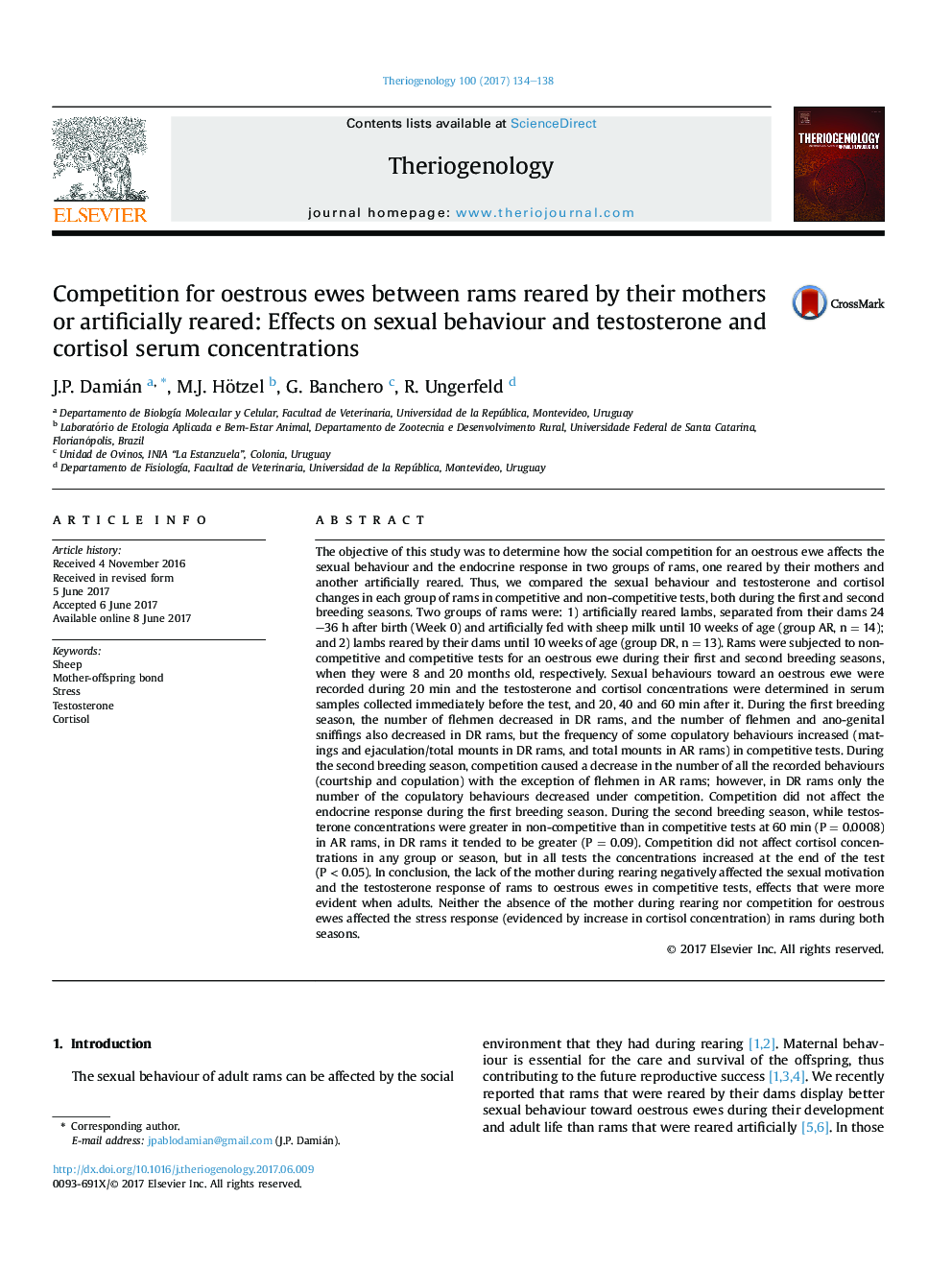| کد مقاله | کد نشریه | سال انتشار | مقاله انگلیسی | نسخه تمام متن |
|---|---|---|---|---|
| 5523103 | 1546069 | 2017 | 5 صفحه PDF | دانلود رایگان |
- The social rearing environment affects the sexual behaviour of rams.
- The lack of the mother during rearing decrease the sexual motivation of rams in competition.
- The testosterone concentrations in competition are lower in rams reared without their mothers.
The objective of this study was to determine how the social competition for an oestrous ewe affects the sexual behaviour and the endocrine response in two groups of rams, one reared by their mothers and another artificially reared. Thus, we compared the sexual behaviour and testosterone and cortisol changes in each group of rams in competitive and non-competitive tests, both during the first and second breeding seasons. Two groups of rams were: 1) artificially reared lambs, separated from their dams 24-36 h after birth (Week 0) and artificially fed with sheep milk until 10 weeks of age (group AR, n = 14); and 2) lambs reared by their dams until 10 weeks of age (group DR, n = 13). Rams were subjected to non-competitive and competitive tests for an oestrous ewe during their first and second breeding seasons, when they were 8 and 20 months old, respectively. Sexual behaviours toward an oestrous ewe were recorded during 20 min and the testosterone and cortisol concentrations were determined in serum samples collected immediately before the test, and 20, 40 and 60 min after it. During the first breeding season, the number of flehmen decreased in DR rams, and the number of flehmen and ano-genital sniffings also decreased in DR rams, but the frequency of some copulatory behaviours increased (matings and ejaculation/total mounts in DR rams, and total mounts in AR rams) in competitive tests. During the second breeding season, competition caused a decrease in the number of all the recorded behaviours (courtship and copulation) with the exception of flehmen in AR rams; however, in DR rams only the number of the copulatory behaviours decreased under competition. Competition did not affect the endocrine response during the first breeding season. During the second breeding season, while testosterone concentrations were greater in non-competitive than in competitive tests at 60 min (P = 0.0008) in AR rams, in DR rams it tended to be greater (P = 0.09). Competition did not affect cortisol concentrations in any group or season, but in all tests the concentrations increased at the end of the test (P < 0.05). In conclusion, the lack of the mother during rearing negatively affected the sexual motivation and the testosterone response of rams to oestrous ewes in competitive tests, effects that were more evident when adults. Neither the absence of the mother during rearing nor competition for oestrous ewes affected the stress response (evidenced by increase in cortisol concentration) in rams during both seasons.
Journal: Theriogenology - Volume 100, 15 September 2017, Pages 134-138
